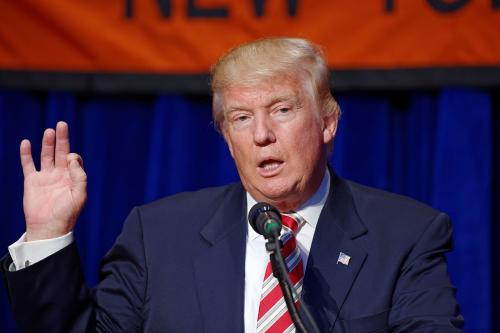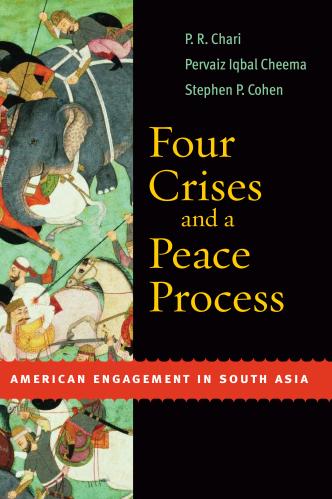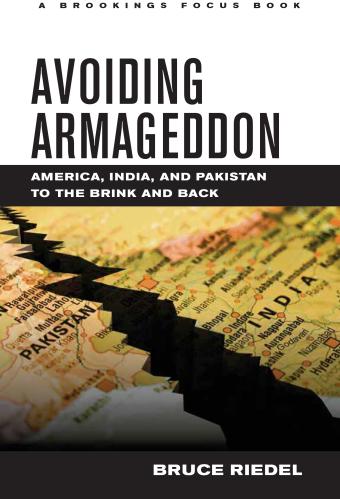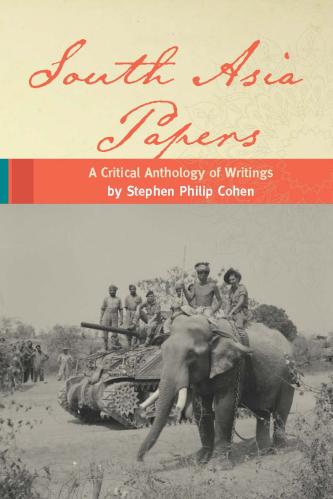US President Barack Obama, who assumed office on January 20, 2009, inherits a healthy US-India bilateral relationship from George W. Bush. After decades of mistrust between New Delhi and Washington, the warming of ties that began in the early 1990s culminated in the bold and unconventional civil nuclear agreement that set aside historical differences over nuclear non-proliferation by giving India access to hitherto prohibited US equipment and technology. Trade, investment and people-to-people ties are on a steady upward trajectory, subject only to the performance of the global economy. Today, the Indian and American governments discuss more issues more frequently than anyone thought imaginable in the dark days of the relationship in the 1970s and 1980s.
But one area in which the two countries have so far failed to make significant breakthroughs is defence collaboration. It is true that they today enjoy almost unprecedented military-o-military relations. But differences over strategic objectives—especially with regard to Pakistan—look likely to constrain their quest for closer strategic collaboration, as do continuing divergences over long-term objectives and priorities. The present India-Pakistan crisis, triggered by November’s terrorist attacks in Mumbai, could be one of a series of events that forces Washington to make difficult choices between its strategy in the so-called “war on terror” and its burgeoning relations with New Delhi.
Defence ties, therefore, remain the one area in which President Obama can build substantively on the breakthroughs of the last eight years in the bilateral US-India relationship. As long as the two countries can in the next few years navigate short-term crises and manage those few areas where interests do clash, the overall prospects for the US-India strategic relationship remain excellent.
After Mumbai, another crisis?
DESPITE the best intentions of the Bush administration and its counterparts in New Delhi, India has not yet been completely ‘de-hyphenated’ from Pakistan. While there has been frequent confluence between Indian and American policy over the last few years, the two states have opposing views on how to handle Pakistan, which both view as one of the major centres—if not the major centre—of global terrorist activity. Specifically, Indian attempts to isolate Pakistan have clashed with American efforts to cooperate with the Pakistani government and military to execute counterinsurgency, counterterrorism and state-building activities in Afghanistan.
The crisis presently brewing between India and Pakistan will probably present Obama with his first major foreign policy challenge as president. Among its possible consequences is the derailment of his plan to make Afghanistan the centerpiece of his version of the “war on terror” (which is likely to receive a new name if not a new strategy). Even if tensions can be defused in the next few months, there remains the frightening possibility of another crisis, triggered by a new terrorist attack, or by India’s desire for punitive action. Obama is expected to continue the Bush administration’s strategy of talking directly to leaders in both countries, urging restraint and a joint approach to the problem of terrorism. However, he will soon discover that the United States has become an integral part of the regional dynamic, as each side uses it to pressure the other.
The United States would learn to live with continuing India-Pakistan crises—much as it does with the intractable Israel-Palestine conflict—were it not for the fact that both states are nuclear armed. Once the present crisis is over, there is likely to be a revival of the arms control-versus-regional policy debate in Washington, which bedevilled American policy during the last few years of the Clinton administration. India has already anticipated this and speaks more positively and regularly about innocuous plans for global disarmament.
This crisis may also lead Obama to some far-reaching policy changes vis-à-vis Afghanistan and Iran. If Pakistan is unable or unwilling to clamp down on militants operating along its north-western frontier, citing tensions with India as a reason, Obama may be forced to rethink the entire Afghan strategy and might follow the path blazed by India of using Iran for access to Afghanistan. This would not necessarily mean abandoning Pakistan as a partner in Afghanistan, but it would allow greater leverage with Islamabad. What Pakistan would do next is uncertain—it could ratchet up tensions with India, it could become a more willing partner in combating terror groups, or it could pull out of the feeble alliance with the United States at the risk of losing economic or military assistance. What approach the incoming Obama administration takes towards Pakistan is as yet uncertain. For better or worse, it promises to hold great sway over the United States’ political relationship with India and, by extension, Indo-US military cooperation.
Defence cooperation, past and present
THE tortuous strategic relationship between the United States and India since 1947 is well documented. Despite frequently converging concerns (particularly regarding Communist China, and more recently Islamist terrorism) and similar ideals (democracy, liberalism and pluralism), the two countries never forged a serious security partnership. The first years of ties are perfectly captured in the title of Dennis Kux’s excellent history, Estranged Democracies.
There was one brief period of sustained strategic cooperation between 1962 and 1965, following the Sino-Indian border war, which exposed India’s military vulnerabilities. Prime Minister Jawaharlal Nehru frantically wrote to President John F. Kennedy in November 1962, focusing on the two countries’ common values, in a last-ditch attempt to secure American support. In the years that followed, the United States provided India with both grant assistance and military sales. This support, along with assistance to Pakistan, ended abruptly with the 1965 India-Pakistan war. The United States’ normalisation of ties with China in the 1970s and its alliance with Pakistan in the 1980s soured the relationship to the point that India began to think of Washington, Beijing and Islamabad as its own ‘axis of evil’.
Sustained cooperation between the United States and India began only in the early 1990s, when military-to-military interactions were renewed. The navies led the way, the Indian navy being the least bound of the three services to a strict defence of India’s territorial sovereignty. The two countries began the annual Malabar exercises in 1992 and, after a hiatus following India’s 1998 nuclear tests, resumed expanded naval cooperation in 2002. The exercises increased in sophistication, from basic passing and replenishment-at-sea in 2002 to full-blown war games with aircraft carriers and satellite communications by 2005. The armies and air forces followed. Beginning in 2003, the two armies began joint counterinsurgency exercises in Mizoram. And after engaging with the US Air Force in exercises in India, the IAF was invited to participate in the Red Flag exercises in Nevada in August 2008, along with the South Korean and French air forces.
Such military-to-military interactions remain, at present, the only concrete result of the much ballyhooed US-India defence relationship, which, as a whole, has been the slowest facet of the overall relationship to realise its potential. Military ties have been uneven at best, with considerable variation in cooperation between different services and in different sectors. Obama will have a difficult time topping his predecessor in substantively improving relations with India but, assuming his administration takes into account India’s wishes and sensitivities, defence collaboration offers one area to build upon Bush’s breakthroughs. The greater obstacle, however, may be India’s incoherence in building and deploying a modern military.
Exercises—the one area of outright success—allow both militaries to operate within their comfort zones and provide some benefits for each side. Unfortunately, attempts to take further steps have frequently been stymied. For example, Washington has made favourable offers to India of institutionalised military cooperation, including offers to join the Combined Task Force 150 based in Djibouti, and to assume a major role in post-invasion peacekeeping operations in Iraq. In both cases, India spurned American proposals for cooperation of a higher order. On the other hand, the United States rejected India’s bid to assume a greater role in Afghanistan after the fall of the Taliban. Washington did not see how India could be of practical help, and did not want to alienate Pakistan, which was in the process of signing on to the American effort.
These refusals by one side or the other stem largely from differences in how Washington and New Delhi perceive the future of the bilateral defence relationship. For the United States, the end goal of steady steps towards closer interoperability is Indian involvement in a cooperative defence alliance, along the lines of the American relationship with other friendly countries such as Australia. India would ideally purchase sophisticated American equipment off the shelf, and participate in military operations in the region and elsewhere under American leadership.
However, India views the burgeoning relationship very differently. Any cooperation with the United States would have to be framed as a partnership of equals, conducted to satisfy immediate Indian security concerns, and designed to involve a transfer of American technology to India that would ultimately abet India’s defence-industrial self-reliance.
The Bush administration learned, sometimes after several missteps, that it would have to temper its expectations accordingly. Enthusiastic rhetoric concerning the “natural alliance” between the two countries—building upon Prime Minister A.B. Vajpayee’s use of the term—gave way gradually to more sober and grounded talk of a mutually beneficial “partnership.” This was not merely a minor semantic adjustment, but rather, a conscious realisation that India’s democracy, its size and its sensitivity to its sovereignty inhibit the kind of relationship that the United States has been used to with other friendly countries.
More problematic, from the perspective of expanded defence cooperation, is the incoherence of India’s effort to modernise its armed forces. This incoherence has deep roots, but two factors stand out. The first is the attitude of most Indian politicians and bureaucrats, who fail to see the need for reforms in the military sphere similar to those pursued in many economic and social sectors. The Indian army today has essentially the same structure as that created by Lord Clive in the 18th century. Second, India’s services themselves lack any sense of cooperation or common purpose; despite talk, there has been no evident move towards this. Military modernisation is frequently interpreted as enhancing equipment and technology, rather than training, doctrine and structure.
The result is a huge, paralysed defence empire. To take the example of defence procurement, particularly critical for the navy and air force, decisions are so hard to come by that India repeatedly misses important opportunities. The default option—producing equipment in India’s own state-owned factories—frequently yields poorly-built and obsolescent weapons that even the Indian services do not want. As far as cooperation is concerned, each service has its own strategic doctrine, none of which necessarily represents actual policy that will be followed by the Indian government. Americans and others who interact with the Indian defence sector are all too often dismayed and disappointed at its 19th century approach to 21st century problems.
Looking ahead
AT ONE level, Barack Obama’s election may not have a major impact on the security dynamics between the two countries. Joint exercises are expected to continue apace and, following the conclusion of the nuclear agreement, are unlikely to be hampered by the dictates of non-proliferation as in years past. The retention of Robert Gates as Secretary of Defence (who purportedly has great enthusiasm for India), continuing reservations in the Pentagon about the rise of China, and the resurgent threats of piracy, narcotics and terrorism also point to broad continuity in bilateral defence relations.
Regardless, four aspects of the Indo-US military relationship can be greatly improved upon by an incoming US administration bent on action, in conjunction with South Block. The first two of these have not yet been brought to fruition to India’s satisfaction, while the latter two have not met American expectations.
The first is joint defence production, which India greatly desires as a mark of trust and as a source of technical know-how. Indian enthusiasm is implicit in its offset policies, but it is exactly those policies, as well as the United States’ strict oversight and end-use monitoring requirements, which make such cooperation difficult. American firms that have tried to work within the offset policy often find it cumbersome, and unlikely to generate significant technological or economic benefits.
The second, collaborative research and development, holds slightly more promise, as India’s proficiency in software complements the United States’ cutting-edge hardware. That avenue, however, has yet to be pursued to its fullest, thwarted partly by India’s less than impressive indigenous defence R&D infrastructure. In addition, the United States’ strenuous oversight over defence technology could also prove an impediment. This may change markedly if the private sector is allowed more space in India, and the long-discussed possibility of technology transfer via private firms on both sides (suitably monitored by the respective governments), could come to fruition in the next few years.
The third aspect is bilateral defence trade, which has so far proven unsatisfactory from the standpoint of American manufacturers. India recently bought C-130J aircraft for almost $1 billion and the USS Trenton, now renamed the INS Jalashwa. These agreements certainly pave the way for further commerce. But while several other marquee defence deals may be in the pipeline, and others appear on hold, American defence contractors at present look unlikely to unseat Russia, Israel and France as major providers of systems to India.
Finally, joint operations—other than for humanitarian relief—remain improbable for the near future, despite several common strategic objectives. Both countries being unused to partnerships of equals, differences over command are likely to be a point of contention, as they were when they contemplated cooperation in Iraq in 2003. While India has not historically been averse to multilateral operations—particularly if under a United Nations flag—it is not likely to participate in US-led coalition efforts unless Indian security is directly compromised, a consequence of India’s defensively-oriented strategic culture, the conservativeness of its bureaucracies, and the dictates of its domestic politics.
Despite the difficulties, the Obama administration can potentially build upon the developments of the last eight years and qualitatively improve the US-India defence partnership. Obama himself had reservations about the nuclear agreement, and supported it reluctantly. Many of his advisors, particularly on nuclear matters, were more overtly critical. Yet, none of them are opposed to India itself; they believe that a strong US-India strategic relationship makes sense. While the first year of the next administration is likely to be mired in extinguishing immediate crises on the economic and foreign policy fronts, the next four—or eight—years will give Obama the opportunity to do more than consolidate the advances in defence cooperation achieved by the Bush administration.









Commentary
Indo-U.S. Ties: The Ugly, the Bad and the Good
February 28, 2009